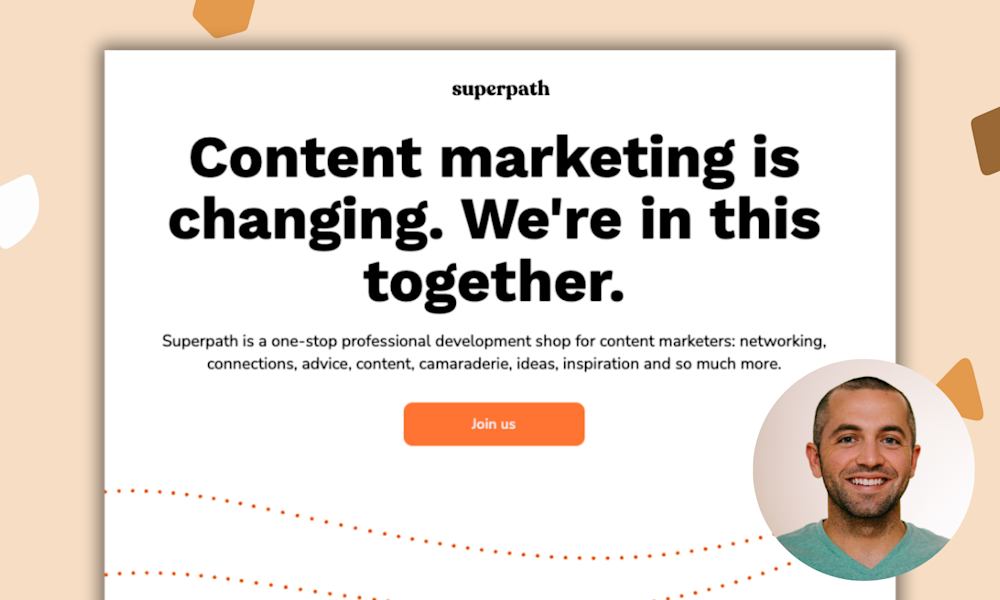Two and a half years ago, Casey Ariel Richardson’s life looked a lot different. She lived in the Bay Area and worked for Bank of America, structuring multimillion-dollar loans for tech companies. But she found that she was always the only Black woman on the team — and in over ten years of working in finance, she never saw funding given to a Black business.
“It showed me that not only was the knowledge not getting there, the capital wasn’t getting to my communities,” Casey recalls.
In October 2020, Casey decided to change that.
Armed with her experience in tech funding and business, she quit her 9-to-5 job and founded BLAZE Group — Building Leaders & Accepting Zero Excuses — to provide knowledge, mentorship, and community to the historically underserved community of Black women entrepreneurs.
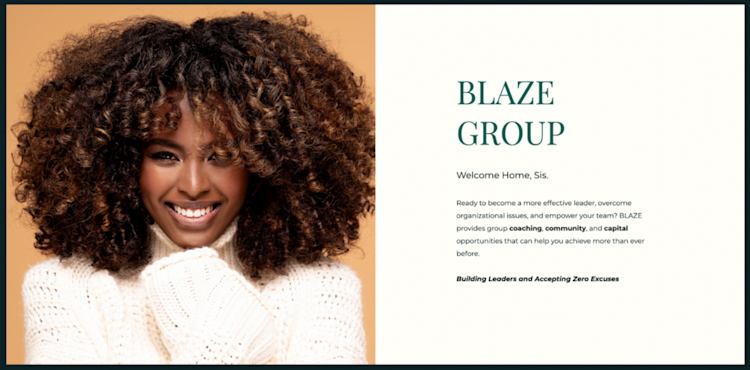
Fast forward to 2023: BLAZE Group offers online courses through Blaze Knowledge Academy, group coaching programs, an online community, an app, in-person retreats, a semiannual virtual summit, and proprietary research, all led by Casey and her global team.
How did she do it in just two years? A combination of providing resources that meet a specific, underserved need, intentional audience building, and choosing the right tools and team.
From corporate finance professional to game-changing entrepreneur
Before she became a full-time entrepreneur, Casey was a finance professional, structuring multibillion-dollar loans for tech companies. It kept her on the cutting edge of new tech — but she also saw disparity in her team and the businesses they were funding. “I was always the only Black woman on the team. It showed me that my education, my knowledge, my exposure just was not available in my communities.”
Black women are the fastest-growing group of entrepreneurs in the United States — but only 3% have “mature” businesses, and 61% self-fund their startup capital. There’s a major disparity in the funding and resources available to Black women entrepreneurs compared to their white male counterparts.
In the summer of 2020, Casey joined the protests against police brutality. She found strength and community that were missing from her day-to-day work. “I felt more alive protesting than I had in all of my years of doing those sexy deals,” she says. “I was rubbing shoulders with the people who were bold enough and courageous enough to lead things that actually matter.”
By October, she was done with the limits of her corporate finance job — not in spite of how successful she was, but because of it. What else could she do with that talent? How could she use her expertise in tech and finance to help other Black women succeed?
"I’m really good inside of these four walls. But I would put money on myself any day to believe that I could take up even more space in the world. So I quit."
She quit her job, moved to Africa, and started building BLAZE Group, a location-independent business that empowers Black women around the world to do the exact same thing.
BLAZE Group specifically targets entrepreneurs in their first three years of business building, which Casey calls the “entrepreneurial phase.”
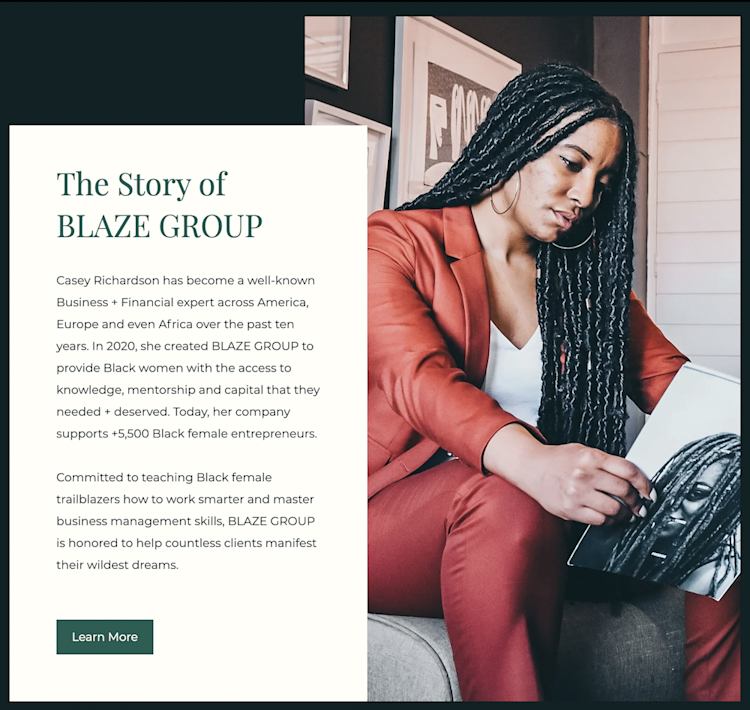
“BLAZE exists to really help them understand how to lead their companies in ways that keep them around. And we do that through tech-enabled solutions, Podia being one of them,” she says.
To serve that audience, Casey had to build genuine relationships with them.
Why you should build an email list (and how to start)
Casey knew that she wanted to create a business intensive online course from the jump — but it was important to build an audience before she launched her first product.
Building an audience is the top challenge creators face, and many launch their first product without any marketing or audience building. That can lead to a disappointing launch, a struggle to get their product in front of people, and content that doesn’t resonate with potential customers.
Casey didn’t want that to happen with the launch of BLAZE’s first product. So, she approached her initial audience-building activities with a clear goal: to build an email list.
Why email subscribers over social media followers? “I knew I wanted to be able to get and own relationships,” explains Casey.
When you own your audience, you build relationships with them on your own terms, using a platform or channel you control. You don’t have to rely on a social media algorithm to get your content in front of people — you have a scalable, direct line of communication, like an email newsletter or online community.
“On Instagram, you don’t own the relationship. You don’t know what their email address is, and if their handle changes, you better hope you know what the new handle is,” Casey says.
“I wanted to own relationships and be able to get in front of them often to build that brand awareness and trust.”
Casey used two main tactics to build her email list:
-
Reaching out to her existing network
-
15-minute discovery calls with her target audience
1. Reaching out to her existing network
There’s a lot of advice out there about how to grow your audience, and many creators think that their first customers will be strangers who found them via social media. But when you start your audience from scratch, you’re missing out on a huge potential source of support: Your friends and family!
Casey reached out to everyone in her circle, letting them know she was starting a newsletter about entrepreneurship and asking if they’d like to subscribe.
“I started by going through my most recent text messages, Instagram DMs, Twitter, Facebook… I set the timer and sent as many as I could in five-minute increments,” she describes.
Many friends and family took Casey up on the offer, and she began building a solid email list leading up to her product launch.
2. 15-minute discovery calls with her target audience
When you get to know your target audience — their goals, challenges, and values — you can create content and products that resonate with them.
And the best way to get to know them is by talking to them.
Casey posted on social media, sharing that she was building a course to help Black women understand business management. “If I can talk to you for 15 minutes and ask questions, let me know,” she added.
She knew that people who set up a call with her were her target audience: Black women interested in entrepreneurship.
Instead of discussing course content or marketing herself, Casey asked questions like, “What keeps you up at night? What is your biggest fear? In one year, where do you wanna be?” She used the time to make the women feel seen and understood. In turn, she learned what was most important to address in her course content.
"Just holding space for that and making them feel safe, that’s a huge part of the magic."
“By the end of most of those calls, they were like, ‘Can I buy the course now?’” Casey remembers. She was still building the course, but she collected their email addresses and promised to let them know when it launched.
When the course was finally ready, she promoted it to the email list she built with these two tactics. “There was already this anticipation from all of those people. They were ready to enroll.”
The results? 80% of the women she spoke to on those initial calls converted to customers.
More than two years later, Casey still offers free discovery calls as part of her sales process. If potential clients have questions about the Blaze Business Intensive, they can schedule a free Perfect Fit Call with Casey.
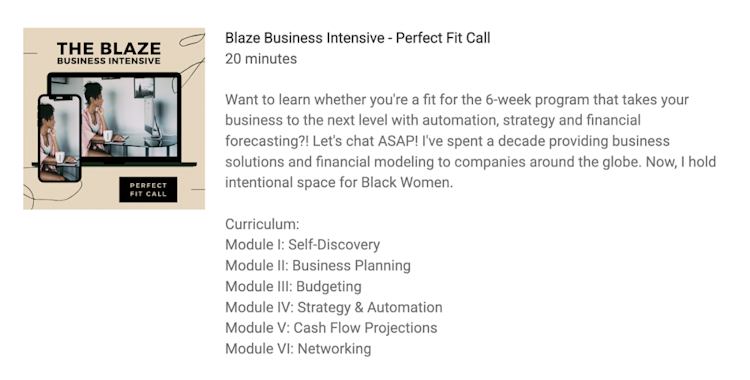
“On average, it takes five follow-ups to close a deal. I don’t think enough entrepreneurs know that,” says Casey. “I use those calls to really seal the deal.”
How working with the right tools and people helps Casey scale her business
Today, BLAZE offers online courses and masterclasses, group coaching programs, an online community, webinars, the TablexTribe mobile app, a semiannual virtual summit (a 2022 Webby Awards honoree for Best in Business and Finance), and proprietary research.
How does she manage all of those things with so much intentionality and care?
Casey has put together an international team that helps her scale different parts of her business, including:
-
A content marketer and blogger based in Nigeria
-
A junior consultant based in London
-
A brand and production manager (her fiancé!) who grew the BLAZE Group Instagram from 1,300 followers in May 2022 to 70,000+ at the start of 2023
-
An executive assistant in Kenya
-
A research analyst who publishes research papers across industries, helping BLAZE find new consulting clients
-
A production assistant for the semiannual Blaze Virtual Summit
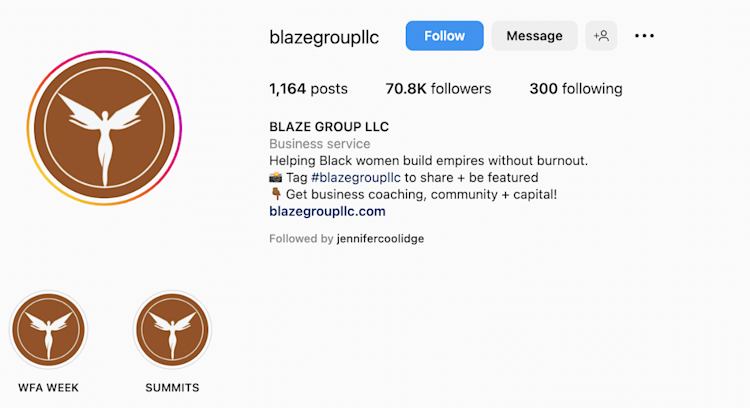
She doesn’t just hire people to join her team — she hires tools, too.
“I hire tools with a quickness,” Casey laughs. “And I love that because there’s scale.”
An increase in revenue doesn’t always mean your business is scaling, especially if you’re doing more work or spending more money to achieve that growth.
“The increase in revenue should not be the main goal,” explains Casey. “If you’re increasing costs at the same rate that your revenue increases, your bottom line doesn’t change."
"Scale happens when you can increase revenue, and your costs and time spent barely change."
Previous experience in tech taught Casey how powerful no-code tools, integrations, and automations can be. As she built BLAZE Group, she leveraged low- and no-code solutions like Podia and Zapier to keep everything running smoothly.
How Casey uses Podia for her courses and downloads
“Podia was the first application I used to offer things at scale,” Casey shares.
Tools like Podia give Casey “more time to do intentional things,” like the one-on-one discovery calls she offers potential clients.
Casey built her first digital product, the Blaze Business Intensive online course, with Podia. It’s a six-week, self-paced course on “Business Building, Business Management and Business Excellence for Today’s Black Woman.”
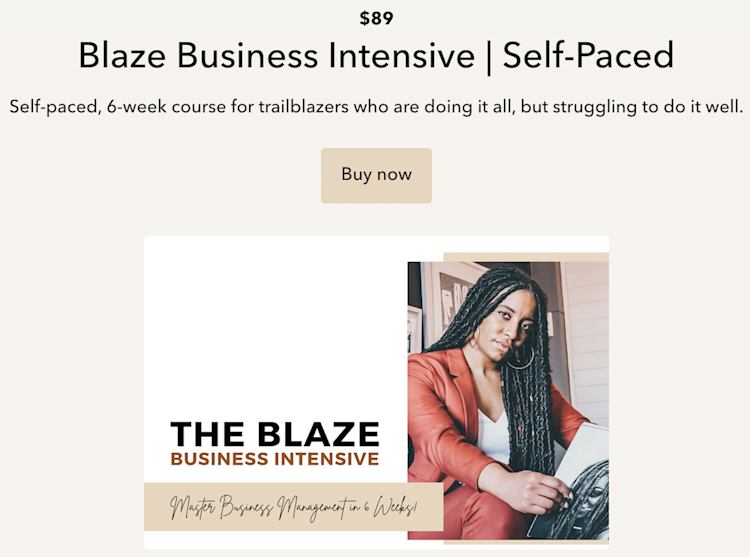
“It was completely no-code. I actually built it back when Podia was doing the 14-day free trials,” Casey remembers. “I built the entire course within that window and started selling it before that expired so I could be immediately profitable.”
(Want to follow in Casey’s footsteps? Sign up for a 30-day trial of Podia, get your course content set up, then upgrade when you’re ready to start selling.)
The course is part of the Blaze Knowledge Academy, a collection of business education resources Casey built on her Podia site. The Academy also includes:
-
Several entrepreneurship masterclasses, many of which she offers for free
-
A free digital download featuring innovative fundraising options for startups
-
Her online community, the Blaze Women’s Network, with nearly 7,000 members
Casey initially ran the Blaze Women’s Network on Facebook, but she didn’t like how customers had to log into different places to access their courses and products.
When Podia launched its community feature, she moved her community over. Now, it’s on the same platform as her courses, webinars, and digital downloads, making it easy for her audience to access all of her content — and go from free members to paying customers — in one place.
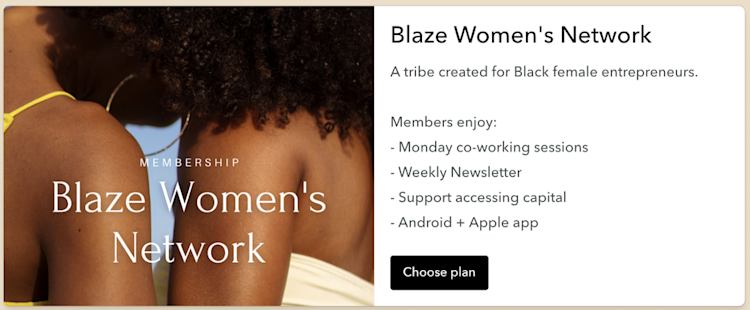
“People can join the Blaze Women’s Network absolutely free,” Casey explains. We do virtual coworking sessions, I host webinars, and then that funnels people into the paid courses.”
In addition to introducing customers to helpful products, Casey’s community gives members a friendly and supportive place to connect with other founders.
“It used to be that ‘content was king,’ but now things are shifting to ‘community is king.’ People are looking for community-centric programs… and the communities that don’t feel like spam come across as genuine.”
Her experience using Podia has given Casey a rubric for what to look for in a no-code creator tool. “You have a very agile system that’s allowed me to do some end-to-end solutions, right on the platform,” she describes. “And I’ve taken that same scorecard when I assess tools because I want to be able to scale with it.”
"It truly is beautiful to use solutions like Podia to impact the entire world in ways that are cost-effective and very accessible to people who are marginalized today."
Don’t try to do everything all at once
Given all of Casey’s accomplishments in just over two years of running BLAZE, her advice to new creators might come as a surprise: Do less — at least when you first get started.
“Keep the main thing, the main thing,” she advises. Hustle culture tells new entrepreneurs that there’s never enough work done or content created. But Casey reminds fellow creators, “There’s only so much you can do, no matter how amazing you are.”
“You don’t have to do all of the things outta the gate, and it’s going to be really, really hard to perfect several things at once when you’re just starting.”
She recommends starting with a signature offering, then building from there. “I started with the Blaze Intensive, my first course, and that is still my signature course. Entrepreneurs should spend time figuring out what their signature offering needs to be, what they want to be known for, before they start adding on a whole bunch of things.”
There’s a lot to navigate at first: your messaging, target audience, marketing, technology, customer satisfaction. But once you do? You open up the potential for so much more.
“I know we have the potential to do a million things. Maybe in 200 years. Because Blaze will still be around. But that doesn’t need to happen today.”
We’re so glad to be a part of Casey’s journey, and we can’t wait to see what’s next for her and BLAZE Group — this year, 200 years from now, and all the time in between.
Start your own online business just like Casey. Try all Podia's features free for 30 days. We can't wait to see what you make.
